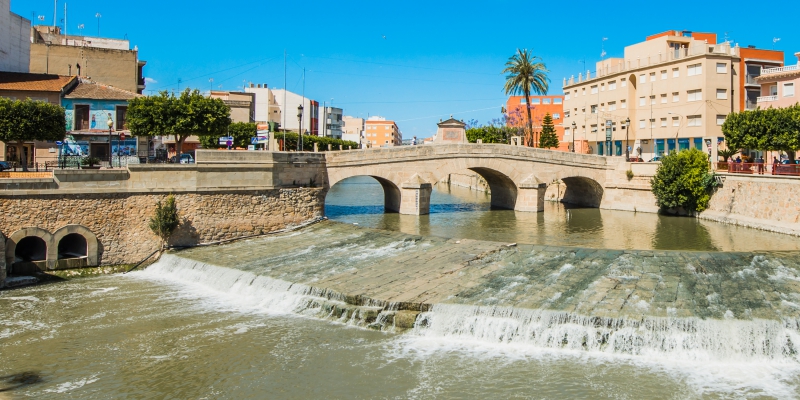The City Council justifies the increase while the controversial coloured granite used on pavements and pedestrian crossings has turned black a month after being installed
The mayor of Rojales, Antonio Pérez, has approved the start of the second modification to the restoration works of the historic, 18th century, hydraulic complex at the Carlos III Bridge.
The controversial works, the contract for which was formalised in 2018 and which has seen a change of contractor, will have an extra cost of 131,811 euros of general expenses. With this increase the council now intends to finish the work after almost two years, works that were originally awarded for 659,618 euros, so the increase represents almost 20%, with the final cost now reaching 791,500 euros.
The local government justifies this extra cost, which it qualifies due to new needs or unforeseen causes”. “The increase is justified, motivated and informed,” they say “and is based on reports from municipal engineers, the construction management, which is an engineer independent of the City Council, and the Secretariat.”
They say that it has not yet been approved, but there is going to be an increase.
The rehabilitation work of the hydraulic complex, the most significant in the municipality, which is pending inclusion as an Asset of Cultural Interest (BIC), is long overdue.
The extra cost of the works will be for lighting, automation equipment and urban furniture, such as benches, all of which have still to be installed, although the bridge was reopened to road traffic last August after completing the installation of the new pavement, but that itself was not without controversy due to the colour of the granite material used.
However, these “eternal” works have been criticised by the opposition, PADER, which denounces the extra cost of 131,000 euros which it states is for the correction of earlier mistakes.
The mayor said that “what PADER intends is that the execution period expires so that the City Council would lose the subsidy of European funds.” The mayor refers to the Feder funds from the European Union that will pay for half of the rehabilitation works of this historic hydraulic complex.
In the case of the Sillería de Carlos III bridge (built in 1790), it is the oldest in the region as the remaining ones were destroyed by the 1829 earthquake.
The City Council decided to open the bridge and its adjoining streets to road and pedestrian traffic at the end of August after almost two years and despite the fact that the works have not yet been completed.





